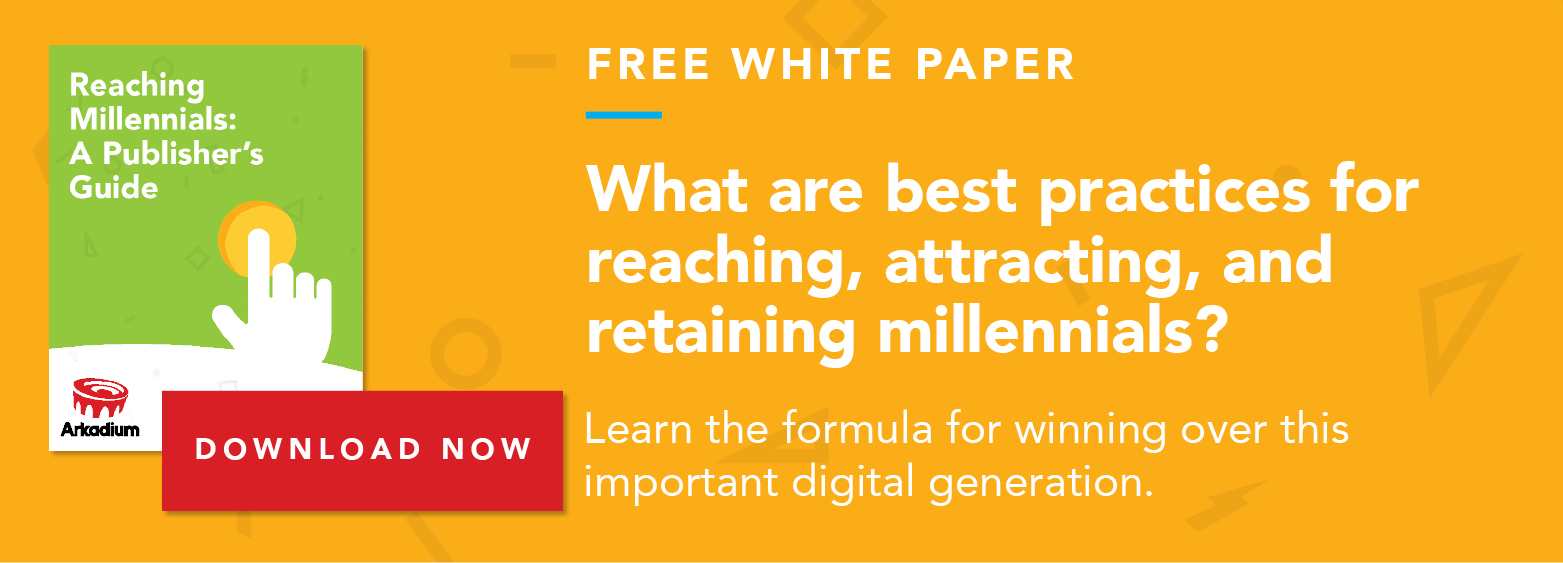Digital Publishing: An Optimistic Look Ahead

Digital publishers can finally celebrate.
According to a 2016 report by comScore, several traditional print publishers including the Washington Post, Hearst and The New York Times grew their digital audiences more than 20 percent – with some well above that mark.1
Fraser Nelson, editor at The Spectator, believes the growth boils down to people’s willingness to pay for quality journalism.2
“The whole industry is seeing a spike in subscriptions,” he says. “At first, I thought it was a Brexit bump, then a Trump bump, but then in January, we were still doing way better than before.”3
Between the rise of digital subscriptions and the shift in media consumption, the digital publishing industry seems to be thriving.
Subscriptions
The Washington Post broke records in 2016 when Publisher and CEO, Fred Ryan, announced that digital subscription revenue had doubled in the past 12 months with a 75 percent increase in new subscribers since January.4
Beth Diaz, VP of audience development and analytics adds, “There is an increasing openness among news consumers that creating quality journalism has a cost and it makes sense to pay for the product you’re consuming.”5
In fact, due to its success in 2016, the Washington Post newsroom will grow by more than 60 jobs — or 8 percent — in 2017.6
The Washington Post isn’t alone in its success.
Digital publishers like The Atlantic, The Financial Times and Slate Plus have all experienced subscription growth.
The Atlantic saw an all-time record number of subscriptions to the magazine in November. December then doubled that record number. Those two months combined accounted for one-third of all The Atlantic’s subscriptions placed in 2016.7
Meanwhile, The Financial Times reported a 33 percent increase in new subscriptions over the two weeks following the U.S. election, and Slate Plus passed the 30,000-subscriber mark — up 66 percent from 18,000 pre-election.8
In addition to an increase in paid subscriptions, readers are also expanding the ways they consume media.
Media Consumption
Per the 2016 U.S. Cross Platform report by comScore, what was once considered a fragmented media landscape is “becoming increasingly interconnected, with consumers seamlessly accessing content across more screens than ever before.”9
The report asserts that while desktop users continue to make up a large part of digital publishers’ audiences, mobile and social have steadily risen as promising platforms.10
In fact, by 2015, viewing of content on mobile devices grew by 78 percent over a two-year period.11
Additionally, Nielsen’s Q1 2016 Total Audience Report found that media consumption among U.S. adults had increased a full hour from 2015.12
According to the report, U.S. adults spent 10 hours, 39 minutes a day consuming media in the first quarter of 2016. The increase is attributed to a growth in smartphone and tablet usage.13
As readers continue to expand the ways they consume media, digital publishers are shifting their audience retention strategies to focus more on engagement.
Damian Radcliffe, editor at the MediaBriefing says, “Engagement matters, not just because it can help drive creativity and revenues, but because news media in particular urgently needs to reconnect with many audiences and demonstrate the value it brings to society. Trust in media and journalists – in the US, UK and many other countries – is at a record low. If we can more effectively demonstrate this value, then perhaps, just perhaps, audiences will be more willing to pay for it.”14
Indeed, it appears digital publishers have hit their stride. Those who can adapt to the shift in media consumption, while engaging their subscribers with quality journalism, should remain optimistic about the industry’s future.
1. Lella, Adam. “Traditional News Publishers Take Non-Traditional Path to Digital Growth.” ComScore, Inc. N.p., 31 Mar. 2016. Web. 24 Mar. 2017.
2. Davies, March 28 2017by Jessica. “‘If you fall in love with your metrics, you’re doomed’: Inside The Spectator’s subscriptions strategy.” Digiday. N.p., 28 Mar. 2017. Web. 28 Mar. 2017.
3. IBID
4. Mullin, Benjamin. “The Washington Post is ‘profitable and growing,’ publisher says.” Poynter. N.p., 13 Dec. 2016. Web. 24 Mar. 2017.
5. Moses, Lucia. “How The Washington Post grew digital subscriptions 145 percent.” Digiday. N.p., 12 July 2016. Web. 24 Mar. 2017.
6. Edkins, Brett. “Washington Post To Expand Newsroom In Aftermath of 2016 Election.” Forbes. Forbes Magazine, 29 Dec. 2016. Web. 24 Mar. 2017.
7. Doctor, Ken. “Trump Bump Grows Into Subscription Surge — and Not Just for the New York Times.” Newsonomics. N.p., 4 Mar. 2017. Web. 24 Mar. 2017.
8. IBID
9. Radcliffe, Damian. “Nine trends in US media consumption: in charts.” TheMediaBriefing. The Media Briefing, 03 May 2016. Web. 24 Mar. 2017.
10. IBID
11. IBID
12. Lynch, Jason. “U.S. Adults Consume an Entire Hour More of Media Per Day Than They Did Just Last Year.” Adweek. N.p., 27 June 2016. Web. 27 Mar. 2017.
13. IBID
14. Sutcliffe, Chris. “Four reasons publishers should be optimistic about 2017.” TheMediaBriefing. The Media Briefing, 06 Jan. 2017. Web. 24 Mar. 2017.


